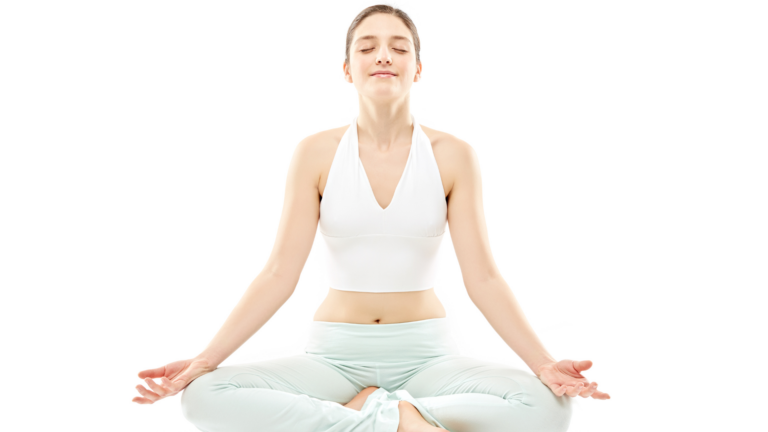What Is Power Yoga and How Can It Boost Strength and Fitness?
Power Yoga, a vigorous and physically demanding yoga style, has surged in popularity. Unlike traditional yoga, which emphasizes gentle stretches and relaxation, Power Yoga focuses on strength, endurance, and cardiovascular fitness. This high-energy practice combines dynamic movements with mindful breathing, providing a comprehensive workout for both body and mind. If you do Power Yoga regularly with a good instructor, you can usually see results in 6-12 weeks. However, this timeframe can vary depending on the individual.
In this blog, we’ll explore the origins of Power Yoga, its key characteristics, and how it can significantly enhance your strength and overall fitness levels, making it an excellent choice for those seeking a challenging and effective fitness routine.
The Origins of Power Yoga

Power Yoga emerged in the United States in the late 20th century, drawing inspiration from Ashtanga Yoga, a traditional form of Indian yoga that emphasizes a specific sequence of postures and synchronized breathwork. Two prominent figures, Beryl Bender Birch and Bryan Kest, are credited with popularizing Power Yoga in the West. They adapted Ashtanga Yoga to make it more accessible and appealing to a broader audience, particularly those looking for a more vigorous workout.
Key Characteristics of Power Yoga
1. Intensity and Pace
Power Yoga is known for its high intensity and fast pace. Unlike traditional yoga, which often involves holding poses for extended periods, Power Yoga flows from one pose to the next in a continuous sequence. This constant movement keeps the heart rate elevated, providing an effective cardiovascular workout.
2. Strength Building
One of the primary focuses of online Power Yoga classes is building strength. The practice incorporates a variety of poses that engage multiple muscle groups, including the core, arms, legs, and back. Poses such as Plank, Chaturanga, and Warrior sequences require significant muscle engagement, helping to build and tone muscles.
3. Flexibility
While Power Yoga emphasizes strength, it also promotes flexibility. The continuous flow of movements stretches and lengthens muscles, improving overall flexibility. This balance between strength and flexibility is crucial for preventing injuries and maintaining a well-rounded fitness routine.
4. Mind-Body Connection
Like all forms of yoga, Power Yoga emphasizes the connection between mind and body. Practitioners are encouraged to focus on their breath and stay present in the moment. This mindfulness aspect can help reduce stress and improve mental clarity, contributing to overall well-being.

Benefits of Power Yoga
1. Improved Strength
Power Yoga is an excellent way to build and enhance muscular strength. The various poses and sequences target different muscle groups, providing a full-body workout. Regular practice can lead to increased muscle tone, better posture, and enhanced functional strength, which is essential for daily activities.
2. Enhanced Cardiovascular Fitness
The dynamic nature of Power Yoga keeps the heart rate elevated throughout the practice. This continuous movement provides a cardiovascular workout that can improve heart health, increase stamina, and boost overall fitness levels. Over time, practitioners may notice improved endurance and a greater ability to engage in other physical activities.
3. Increased Flexibility
Power Yoga involves a wide range of movements and poses that stretch and lengthen muscles. Regular practice through online yoga classes for flexibility can lead to improved flexibility, which is essential for maintaining joint health and preventing injuries. Enhanced flexibility also allows for a greater range of motion, making everyday activities easier and more comfortable.
4. Weight Management
The high intensity of Power Yoga makes it an effective tool for weight management. The combination of strength training and cardiovascular exercise helps burn calories and increase metabolism. Additionally, the mindfulness aspect of yoga can help practitioners develop a healthier relationship with food and make more conscious dietary choices.
5. Stress Reduction
Power Yoga incorporates elements of mindfulness and breath control, which can help reduce stress and promote relaxation. The focus on the present moment and the connection between mind and body can lead to a sense of calm and improved mental clarity. Read our blog on “ Yoga For Relaxation And Stress Relief ” to learn how yoga reduces stress which is beneficial for overall health and well-being.
6. Improved Balance and Coordination
Many poses in Power Yoga require balance and coordination. Regular practice can enhance these skills, leading to better stability and control in both yoga and daily activities. Improved balance is particularly important as we age, as it can help prevent falls and injuries.
How to Get Started with Power Yoga

1. Find a Qualified Instructor
If you’re new to Power Yoga, it’s essential to find a qualified instructor who can guide you through the practice. Look for instructors with experience and certifications in Power Yoga or Ashtanga Yoga. A knowledgeable instructor can help ensure that you’re performing poses correctly and safely.
2. Start Slow
Power Yoga can be intense, especially for beginners. Start with a beginner’s class or a slower-paced session to get acquainted with the basic poses and sequences. As you build strength and endurance, you can gradually progress to more advanced classes.
3. Listen to Your Body
It’s crucial to listen to your body and avoid pushing yourself too hard. Power Yoga is meant to be challenging, but it shouldn’t cause pain or discomfort. If you feel any pain or strain, modify the pose or take a break. Remember, it’s better to build strength and flexibility gradually than to risk injury.
4. Practice Regularly
Consistency is key to reaping the benefits of Power Yoga. Aim to practice at least three times a week to build strength, improve flexibility, and enhance cardiovascular fitness. Over time, you may find that you can increase the frequency and intensity of your practice.
5. Combine with Other Forms of Exercise
While Power Yoga is an excellent workout on its own, it can also complement other forms of exercise. Consider incorporating Power Yoga into a well-rounded fitness routine that includes cardiovascular exercise, strength training, and flexibility work. This balanced approach can help you achieve optimal fitness and overall well-being.
Sample Power Yoga Routine
To give you an idea of what a Power Yoga session might look like, here’s a sample routine that you can try at home. Remember to warm up before starting and cool down afterward.
Warm-Up (5-10 minutes)
- Child’s Pose: Start in Child’s Pose to center yourself and focus on your breath.
- Cat-Cow Stretches: Move through a series of Cat-Cow stretches to warm up your spine and prepare your body for movement.
- Downward Dog: Transition into Downward Dog, stretching your hamstrings, calves, and shoulders.
Main Sequence (30-40 minutes)
- Sun Salutations: Begin with a few rounds of Sun Salutations to build heat and get your heart rate up.
- Warrior Sequence: Flow through Warrior I, Warrior II, and Reverse Warrior to build strength in your legs and core.
- Plank and Chaturanga: Move into Plank and lower into Chaturanga to engage your upper body and core.
- Upward Dog and Downward Dog: Transition from Chaturanga into Upward Dog and then back to Downward Dog.
- Balancing Poses: Incorporate balancing poses like Tree Pose and Eagle Pose to improve stability and coordination.
- Core Work: Add core-strengthening poses like Boat Pose and Plank variations.
- Backbends: Include backbends like Cobra Pose and Bow Pose to strengthen your back and improve flexibility.
Cool Down (5-10 minutes)
- Seated Forward Fold: Stretch your hamstrings and lower back with a Seated Forward Fold.
- Supine Twist: Release tension in your spine with a gentle Supine Twist on each side.
- Savasana: End your practice with Savasana, allowing your body to relax and absorb the benefits of your practice.
Conclusion
Power Yoga is a dynamic and challenging form of yoga that offers numerous benefits for strength and fitness. By incorporating Power Yoga into your fitness routine, you can build muscle, improve cardiovascular health, increase flexibility, and reduce stress. Whether you’re a seasoned athlete or a fitness beginner, Power Yoga can help you achieve your health and wellness goals. Remember to start slow, listen to your body, and practice regularly to experience the full benefits of this invigorating practice.


